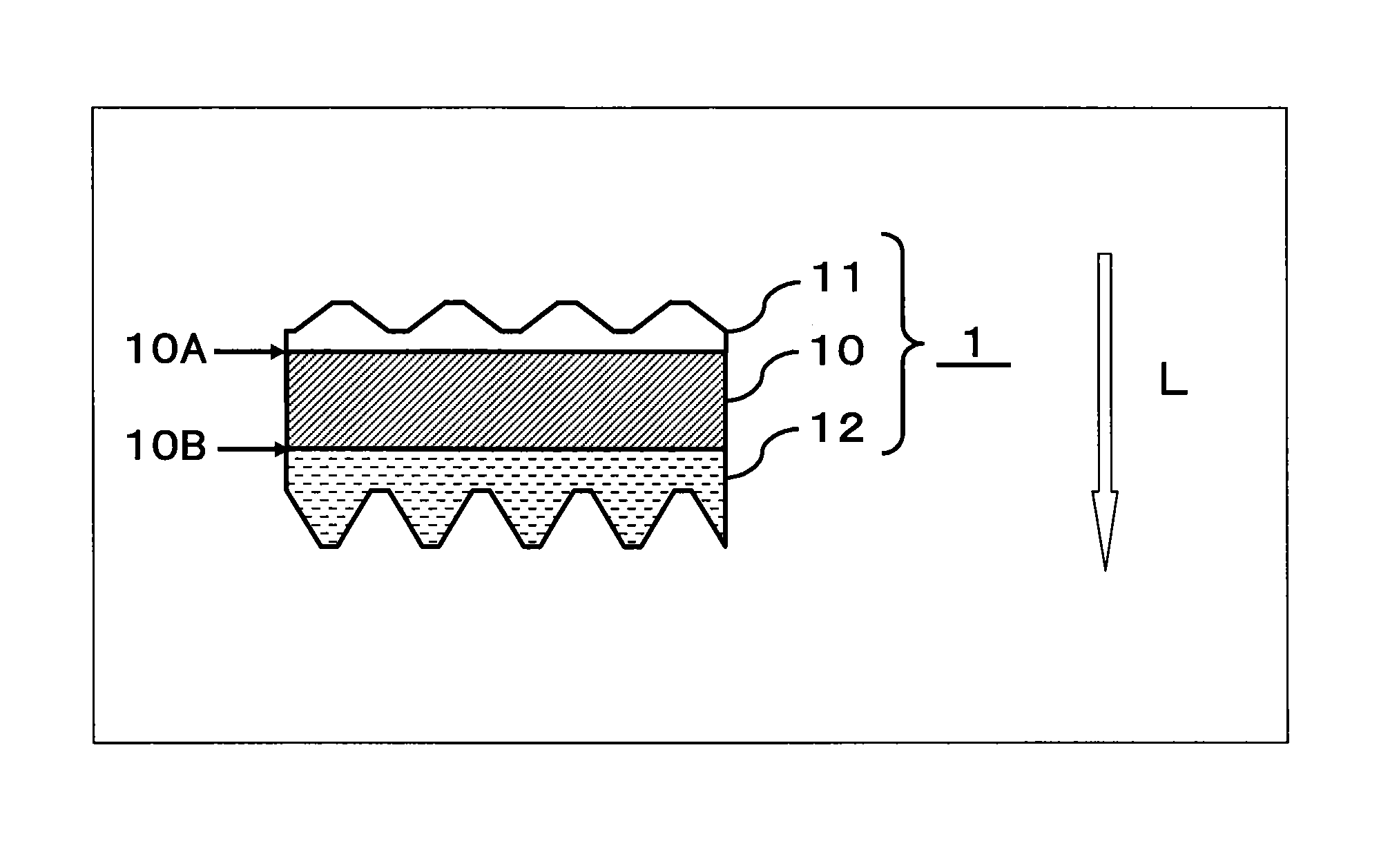Light extraction transparent substrate for organic el element, and organic el element using the same
- Summary
- Abstract
- Description
- Claims
- Application Information
AI Technical Summary
Benefits of technology
Problems solved by technology
Method used
Image
Examples
example 1
Preparation of Master Block (Mold) for Forming Diffraction Grating
[0232]A block copolymer solution was obtained by dissolving 150 mg of the block copolymer 1 and 38 mg of polyethylene glycol 4,000 (Mw=3000, Mw / Mn=1.10) manufactured by Tokyo Chemical Industry Co., Ltd., as polyethylene oxide in toluene, which was added thereto with the total amount being 10 g, followed by filtration through a membrane filter having a pore diameter of 0.5 μm. Next, the thus obtained block copolymer solution was applied by spin coating in a film thickness of 200 to 250 nm onto a polyphenylene sulfide film (TORELINA manufactured by Toray Industries, Inc.) serving as a base material. The spin coating was performed at a spin speed of 500 rpm for 10 seconds, and subsequently at 800 rpm for 30 seconds. After that, the thin film applied by the spin coating was dried by being left at room temperature for 10 minutes.
[0233]Subsequently, the base material on which the thin film was formed was heated in an oven o...
reference example 1
Preparation of Master Block for Forming Diffraction Grating
[0269]First, a mold comprising a nickel-electroformed article whose surface was subjected to a mold-release treatment (hereinafter, simply referred to as mold (A)) was obtained by employing the same method as the method for preparing a master block (mold) for forming a diffraction grating employed in Example 1. Next, a mold (B) for forming a diffraction grating was manufactured by using the thus obtained mold (A). Specifically, a fluorine-containing UV curable resin (manufactured by Asahi Glass Co., Ltd. under the product name of “NIF”) was applied onto a PET substrate (COSMOSHINE A-4100 manufactured by Toyobo Co., Ltd.), and the mold (A) comprising the nickel-electroformed article was pressed thereto. Then, the fluorine-containing UV curable resin was cured by irradiation with ultraviolet rays at 600 mJ / cm2, and then the mold (A) was peeled off. Thus, the mold (B) for forming a diffraction grating which was made of the UV c...
PUM
 Login to View More
Login to View More Abstract
Description
Claims
Application Information
 Login to View More
Login to View More - R&D
- Intellectual Property
- Life Sciences
- Materials
- Tech Scout
- Unparalleled Data Quality
- Higher Quality Content
- 60% Fewer Hallucinations
Browse by: Latest US Patents, China's latest patents, Technical Efficacy Thesaurus, Application Domain, Technology Topic, Popular Technical Reports.
© 2025 PatSnap. All rights reserved.Legal|Privacy policy|Modern Slavery Act Transparency Statement|Sitemap|About US| Contact US: help@patsnap.com



